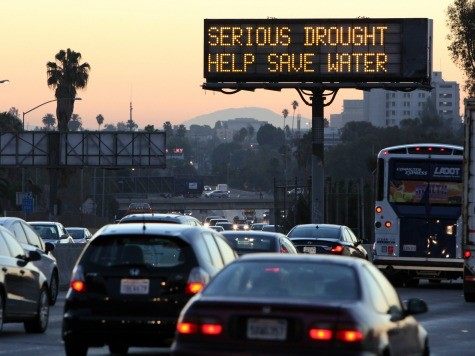The liberal California Legislature, having worsened the drought crisis by refusing to build water infrastructure, now is demanding the “opportunity” to expropriate historic water rights.
Rahm Emanuel, as Chief of Staff for President Obama in the depths of the 2008-9 financial crisis said, “You never want to let a good crisis go to waste,” because “it is an opportunity to do things you think you could not do before.” The administration leveraged the crisis to pass unrelated legislation to raise taxes and pass Obamacare.
Chris Nichols, the Sacramento political reporter for the San Diego Union-Tribune, writes ‘Ask Mr. Commute’ and advocates for liberal causes like high-speed rail and drivers’ licenses for illegal immigrants. He just published “CA Still Tied to Gold Rush-Era Water Rights System” to highlight how “senior water rights holders enjoy few limits on their water and nearly zero cost or accountability,” yet are “off-limits to many state regulations.”
The “senior-rights” Nichols is complaining about are California’s “riparian water rights” that are included in “source of title” to property that “abutted” the “watercourse” of the state’s natural rivers and streams. These water rights pre-date the Legislature’s action in 1914 establishing regulation of “Appropriative Rights” for “unallocated water.”
California’s first water-right permits were established in Spanish land grants as property rights to ensure food production to support their Colonial network of pueblos, ranchos and 21 missions. The United States took control of California in 1846 as a territory during the Mexican-American. The US government promised to protect property rights.
Then all-hell-broke-loose with the 1848 discovery of gold. The 1849 Gold Rush era was a lawless time when miners and farmers claimed water rights by posting notices to trees along waterways. Gun battles over water claims were common, since water was key to dredging for gold and profitably growing the food to feed the miners.
The United States granted California statehood in 1850 and directed re-issuance of land titles, including riparian rights, to all legitimate holders under the 1851 Act of Congress
Little changed regarding water rights until the 1913 opening of the Los Angeles Aqueduct demonstrated that infrastructure could dramatically change where and how much water flowed to different communities in California.
To prepare to manage the expected explosion of “unappropriated” water, the California Legislature passed The Water Commission Act of 1914 to establish a comprehensive permit system of “Appropriative Rights” regarding all new water “diversion and storage.”
California specifically guaranteed all pre-1914 water rights as senior if used for municipal and industrial uses, irrigation, hydroelectric generation and livestock watering.
The Act created an agency that later evolved into State Water Resources Control Board to regulate permits and licenses for California’s “post-1914” surface water. New permits required petitioning the state’s new water agencies to demonstrate availability of “unappropriated water” and the ability to beneficially use new water resources.
Over the next 65 years, huge amounts of “unappropriated water” was created by building dams and reservoirs. Shasta Lake was created by damming three rivers in 1945. Oroville, the tallest dam in the United States at 770-feet high, was finished in 1968. The state also built 10 large reservoirs from 1927 to 1979 to support a population that had grown at the time to 22.3 million.
But despite a 70 percent population growth to 38 million today, California has not built a dam or major reservoir in 36 years. Without the Legislature building any new “diversion and storage” infrastructure in over three decades, it should not be surprising that there is a “crisis” due to a lack of creating any new “unappropriated” water.
Nichols states, “Critics say this system has created an arbitrary set of winners and losers among farms, cities and the environment, compromising the state’s ability to deliver water in a fair and effective manner during painful dry spells.”
San Diego, the second largest city in California and eighth-largest in America, was able to grow to 1.3 million people because “unappropriated” water was created through “diversion and storage” infrastructure.

COMMENTS
Please let us know if you're having issues with commenting.